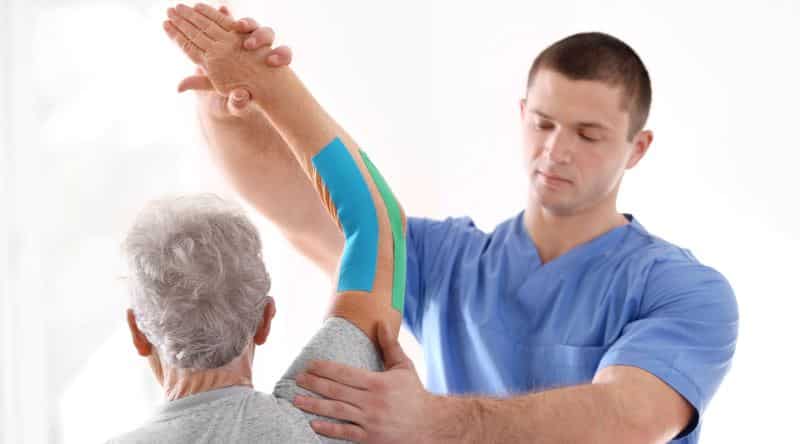In the world of medical billing and coding, CPT codes play a crucial role in accurately documenting and categorizing various medical procedures and services. CPT Code 97112 is one such code that is often used in physical therapy and rehabilitation settings. This code represents neuromuscular reeducation, a vital component of patient recovery and well-being. In this comprehensive guide, we will delve deep into CPT Code 97112, understanding its significance, applications, and the essential aspects related to it.
Understanding CPT Code 97112
CPT stands for Current Procedural Terminology, and it is a standardized medical code set used by healthcare providers to report various medical, surgical, and diagnostic services. CPT Code 97112 specifically pertains to neuromuscular reeducation. To understand it better, let’s break down this code:
- 97 Series: Codes beginning with “97” generally fall under the category of physical medicine and rehabilitation.
- 112: The specific code within the series, 97112, relates to neuromuscular reeducation.
Neuromuscular reeducation is a therapeutic technique used by physical therapists to help patients regain proper neuromuscular control, coordination, and function in various areas of the body. This therapy can be beneficial in a wide range of conditions, from musculoskeletal injuries to neurological disorders.
When Is CPT Code 97112 Used?
Healthcare professionals use CPT Code 97112 in various healthcare settings, including physical therapy clinics, rehabilitation centers, hospitals, and even some outpatient services. The code is most commonly employed when a patient requires treatment for neuromuscular dysfunction. This dysfunction can manifest in different ways, and the therapy aims to address issues such as:
- Muscle Weakness: Patients with weakened muscles due to injury, surgery, or prolonged immobilization can benefit from neuromuscular reeducation. This therapy helps in strengthening and restoring muscle function.
- Coordination Problems: Individuals who struggle with coordination and balance issues, often seen in conditions like stroke or cerebral palsy, can benefit from this type of therapy.
- Gait Abnormalities: Neuromuscular reeducation is often used to correct walking and gait problems caused by muscle imbalances or injuries.
- Posture Correction: It can be employed to address postural problems, such as poor posture leading to musculoskeletal pain and discomfort.
- Motor Control Disorders: Individuals with motor control disorders or neurological conditions, like Parkinson’s disease, can also find relief through this therapy.
- Sports Injuries: Athletes recovering from sports-related injuries often require neuromuscular reeducation to regain their strength, coordination, and functionality.
The Neuromuscular Reeducation Process
Neuromuscular reeducation is a therapeutic approach that focuses on retraining the body’s neuromuscular system. The therapy process typically includes the following components:
- Evaluation: Before commencing neuromuscular reeducation, a physical therapist or healthcare provider conducts a comprehensive evaluation of the patient’s condition. This evaluation helps in understanding the extent of neuromuscular dysfunction and tailoring the therapy accordingly.
- Goal Setting: Once the evaluation is complete, specific goals for the therapy are established. These goals can vary widely depending on the patient’s condition and needs, but typically revolve around improving muscle strength, coordination, balance, and functional abilities.
- Customized Exercises: A personalized exercise plan is created to address the patient’s unique needs and goals. These exercises can include resistance training, stretching, balance drills, and functional movements.
- Hands-On Techniques: In some cases, therapists use manual techniques like massage, joint mobilization, and myofascial release to aid in neuromuscular reeducation.
- Biofeedback:Modern technology may provide biofeedback to patients, helping them understand and improve their neuromuscular control.
- Progressive Rehabilitation:Therapists progressively adjust the exercises and therapy plan to challenge the patient’s neuromuscular system over time.
- Patient Education: Therapists educate patients about their condition, the importance of the exercises, and how to maintain their progress outside of therapy.
Read More:
Limitations and Considerations
While CPT Code 97112 is a valuable tool for providing and documenting neuromuscular reeducation, there are some limitations and considerations to keep in mind:
Medical Necessity: For insurance coverage and reimbursement, it is vital that neuromuscular reeducation is deemed medically necessary. The patient’s condition should warrant this specific therapy.
Documentation: Comprehensive and accurate documentation is crucial for successful billing and insurance claims. Inadequate or incorrect documentation can lead to claim denials.
Plan Limits: Insurance plans may have limitations on the number of sessions or the total cost they will cover. Patients should be aware of these limitations and plan accordingly.
Alternative Therapies: In some cases, alternative therapies or interventions may be more appropriate or effective for a patient’s condition. It’s essential to consider all available options.
Preauthorization: Ensure that any preauthorization requirements are met to prevent claim denials. This may involve providing documentation of medical necessity.
Coding Errors: Mistakes in coding can lead to claim denials and payment delays. Healthcare providers must stay updated on the latest coding guidelines and must ensure accurate code application.
Patient Education:Educate patients about therapy, their role in the rehabilitation process, and any associated costs or insurance considerations.
Conclusion
CPT Code 97112, representing neuromuscular reeducation, is a crucial tool in the field of physical therapy and rehabilitation. It serves to accurately document and bill for services that help patients regain proper neuromuscular control and function. Understanding when and how to use this code, as well as the documentation and insurance considerations, is essential for both healthcare providers and patients.









